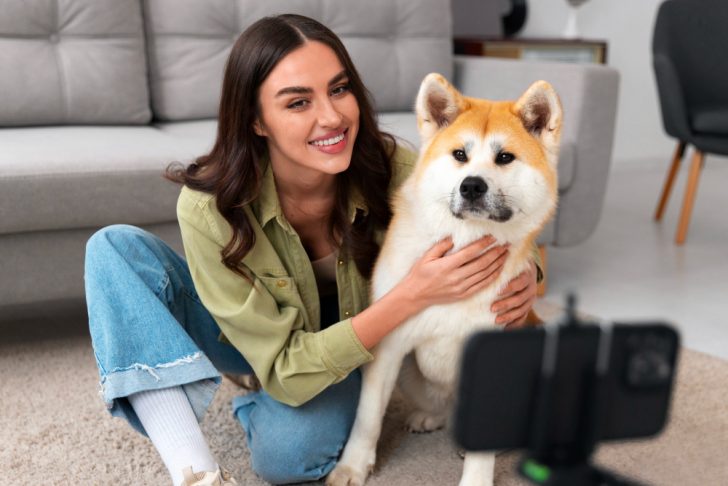Dogs have a way of surprising us, and one of the quirkiest things they do is watch TV. Recent research shows that this habit is cute. And it is a window into how dogs think, feel, and react to the world around them.
A 2025 study in Scientific Reports analyzed 453 dogs and found their TV habits depend on personality traits like excitability and anxiety. Thanks to modern LED and OLED screens with smooth refresh rates, dogs now see clearer images compared to old flickering TVs. Their eyes are built for a blue and yellow world, and they process fast movement differently from us.
Excitable dogs tend to lock onto movement. They might bark, tilt their head, or even try to chase a bird darting across the screen. Some dogs come alive when they hear animal sounds—howls, barks, even a meow from the TV can set them off. It’s not just noise; it flips a switch in their brains, and they’re suddenly on alert, ready to react. It fits their lively, curious personality.
But dogs that are more anxious tend to tune into different things. It’s not the animals on screen they notice—it’s sudden, sharp sounds like a doorbell or a honking car that make them jump. This can stress them out, making them more alert or restless. Their response says a lot about their sensitivity and how they process sudden changes in their environment.
Age and breed might seem important, but the same research found no big connection. A young pup and a senior dog might both stare at the same screen, and their breed alone does not explain their behavior. Herding breeds showed slightly more interest, likely because of their built-in drive to track motion, but it is not a rule you can rely on.

Freepik / Modern high-definition TVs with faster refresh rates (e.g., LED/OLED screens) make it easier for dogs to see smooth images, unlike older flickering CRT screens.
Animal-focused shows grab attention far more than human-centered ones. About 45% of dogs in the study reacted every time they saw or heard other animals. Growls, birds, or even a faraway howl made them perk up. In contrast, shows with objects or people did little for most dogs, except for anxious ones who picked up on sharp sounds.
TV can be more than entertainment. For dogs stuck in shelters or home alone, tailored programming with animal content can reduce boredom. It gives them mental stimulation and a sense of engagement. Choosing the right shows can actually make their day brighter and calmer.
That said, not every sound is good. Programs with sudden doorbells or car alarms can trigger stress in anxious dogs. If you notice your dog getting overly wound up, it might help to switch to something calmer on screen. Being tuned in to their reactions can go a long way in creating a space where they feel safe and relaxed.
Training helps as well. Dogs that lunge at the screen out of excitement can benefit from desensitization techniques. With consistency, they can learn to stay composed and treat TV time as a low-key, enjoyable routine. This not only improves their focus but also strengthens the bond with their owner.
It is worth noting that the study focused only on dogs already familiar with TV. That means we still have a lot to learn about first-time viewers and how their habits form.
